
The Science of Play
From the time it arrives at your doorstep,
the Hub will captivate your dog's mind
with challenges based on the science
of animal behavior and cognition.
The Science of Play
From the time it arrives at
your doorstep,
the Hub will
captivate your dog's mind
with challenges that use
proven automated
training strategies

Associative Learning
Animals figure out how to succeed in the world by establishing cause and effect through associative learning. Classical conditioning1 (think Pavlov’s dog!) helps animals understand the association between two stimuli (Hub->yummy treats!). Operant conditioning2 pairs behavior to rewards (touch Hub -> yummy treats!)

The Law of Effect
The Law of Effect3 says: behaviors that result in satisfying outcomes (like pressing the touchpads and getting a food reward) are more likely to be repeated later. Behaviors that don’t (like pressing the wrong touchpad) will be less likely to occur.

Adaptive Training
A puzzle with the right difficulty level is motivating and engaging: (How do I get that treat?!). If a game is too easy, boredom leads to giving up. If it’s too hard, animals will quit out of discouragement4. The Hub continuously adjusts the type and difficulty of its challenges based on your pet’s current ability.
CleverPet's Challenges
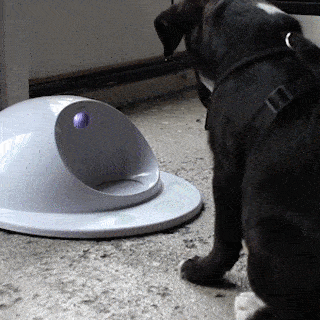
Eating the Food
The Hub starts out by offering food to your dog “for free”. Their only task is to eat kibble a few times in a row from the food tray.
Classical conditioning helps your dog make a connection between the sounds and movements of the Hub and the tasty treats it offers.

Exploring the Touchpads
Food is still offered periodically “for free”, but now your dog will also earn a reward when they press a touchpad — even if just ‘by accident’.
Now, dogs start to associate their own behavior with getting the food. By a combination of classical and operant conditioning, dogs begin to understand that the Hub is a tool they can control to get treats!

Engaging Consistently
This challenge takes off the training wheels and no longer offers your dog free kibble. Now your dog will need to press a touchpad to earn a reward.
Through repeated action and feedback from the Hub, dogs learn that the front of the Hub — where the touchpads are — is the most interesting part. Before this challenge, a very patient dog could hang out and wait for free treats!
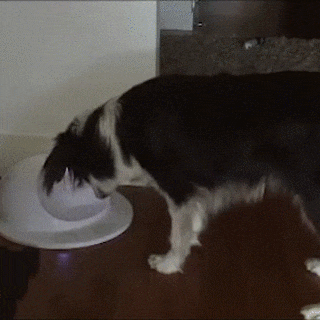
Avoiding Unlit Touchpads
Now, only two of the three touchpads are lit, and your dog must learn that only pressing illuminated touchpads will result in a reward. This is the first time the Hub’s lights become meaningful cues.
Using trial and error, your dog will gather evidence and figure out how the Hub works, and what to do to earn a reward. All attempts to get kibble (whether successful or not) are part of the learning process. As they learn, dogs will hit the unlit touchpads less and less.
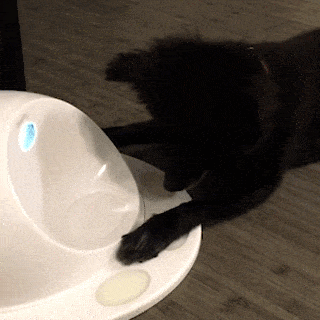
Learning the Lights
Only one touchpad is lit up, and two are unlit. This is the challenge where most dogs start to ‘see the lights’.
If your dog wasn’t using the information provided by the lights on the previous challenge, they could expect to get rewarded about two-thirds of the time, just by chance. Now, that’s down to one-third. The lights are twice as important as before!

Mastering the Lights
This challenge continues with only one lit touchpad, and now your dog will need to engage even more consistently and accurately.
There are some sneaky ways for dogs to get enough food without always paying attention to the information the lights give them. This challenge improves on the previous by making these default strategies much less beneficial to dogs.
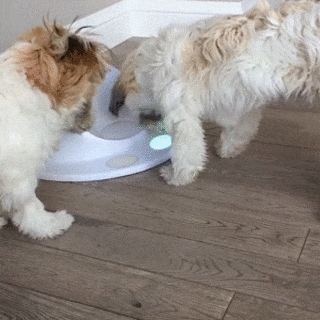
Responding Quickly
Immediately after your dog presses one illuminated touchpad, a different one lights up and must be touched. Now, your dog is tasked with pressing two touchpads in a row to solve one puzzle.
Chaining behaviors together requires your dog to complete multiple correct actions in sequence to earn a reward. Your dog must learn to stay attentive for a second instruction even after the first press.

Learning Brightness
After the first press, the other touchpads light up and your dog will need to choose the brightest one. The touchpads start out with very different brightness levels and gradually become more difficult to tell apart.
Your dog now has to make a more careful comparison between the target (brighter) and distractor (dimmer), and will gradually improve as they learn to attend to the relevant feature. This skill will come in handy during the next few challenges.

Learning Double Sequences
This challenge engages your dog with sequences of action. To complete a single puzzle, your dog must press the brightest button accurately two times in a row.
During this challenge, the Hub gives your dog information that will help them plan their next move. The dim button during the first sequence will become the brighter during the next. Clever dogs will catch onto this and use this “hint” to determine which touchpad to press next.
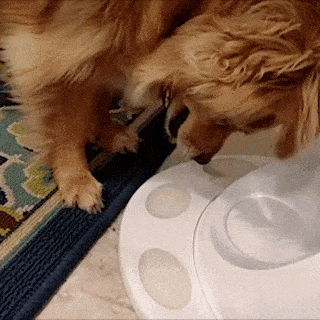
Learning Longer Sequences
The sequences get longer and longer! Now, your dog is challenged to complete patterns of up to nine in a row. Beginning with three, the sequences get progressively longer with success, and shorter when the difficulty is too high.
To master this challenge, dogs need to stay attentive and accurate over progressively longer periods of time. They do get a few ‘lives’ so that one missed touchpad doesn’t always set them back to the beginning.
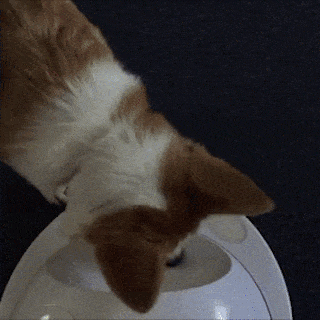
Matching Two Colors
For the first time, the Hub introduces colors (blue and yellow - yes, dogs can see color!) as a meaningful signal. Each time a touchpad is pressed, its color will change. Your dog’s job is to make all the touchpads match within a limited number of overall presses.
Up until now, there was always one correct answer about which pad to touch. This is the first challenge where each puzzle has more than one correct solution, and it showcases your dog’s abilities solve problems creatively and in their own way.

Matching More Colors
This challenge is similar to Matching Two Colors, but now the pads can also turn white.
By adding another color, the number of possible solutions grows exponentially! By now, there are over 24 initial combinations to solve, and many different paths to solving a given puzzle.
Future Challenges
Based on feedback from our awesome customers and data that we receive from individual dogs, we are always enhancing our challenges and developing new ones! As we create new games, we often test them with a small set of dogs — if you have a Hub and would like to be one of our challenge testers, please let us Know
- https://doi.org/10.1007/s10071-013-0688-x
- http://www.scholarpedia.org/article/Classical_conditioning
- http://www.scholarpedia.org/article/Operant_conditioning
- http://www.scholarpedia.org/article/Reinforcement#History
- https://en.wikipedia.org/wiki/Motivation#Incentive_theories:_intrinsic_and_extrinsic_motivation https://en.wikipedia.org/wiki/Motivation#Behaviorist_theories













